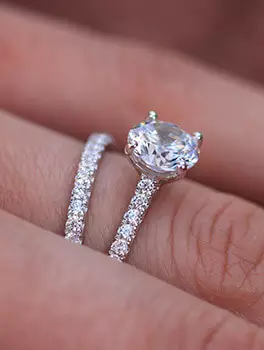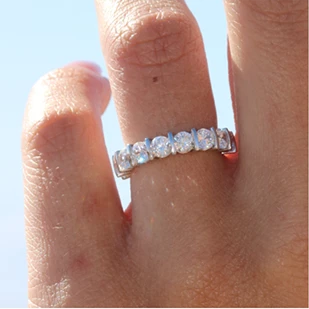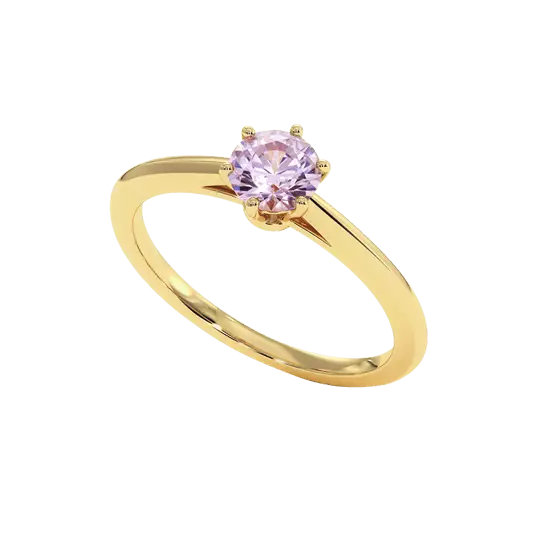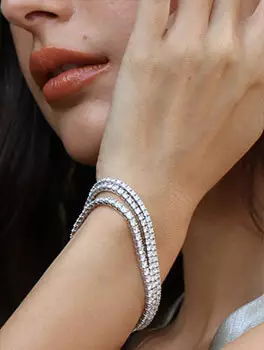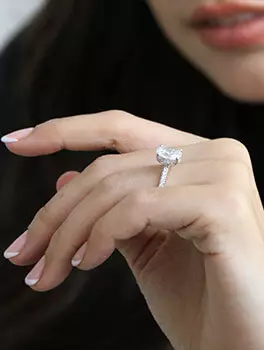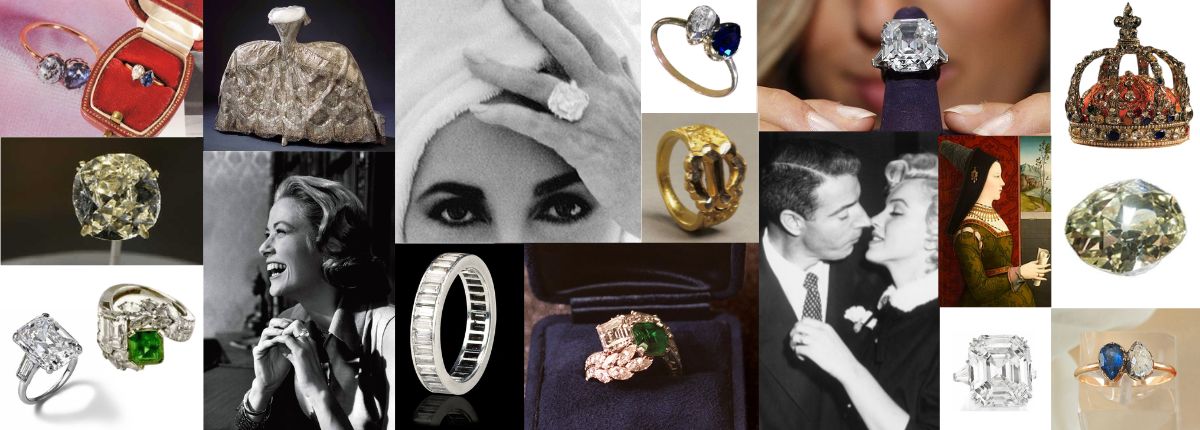
Among all precious stones, diamonds are undoubtedly the most prized, especially for adorning jewelry.
Since their discovery, these gems have captivated the admiration of the elites and the most powerful, who have displayed them to symbolize power and invincibility.
On the other hand, marriage is the goal of many individuals on earth. Considered as the most important and happiest day of life, nothing seems purer than a diamond adorning an engagement ring.
How are diamonds created ?
The diamond, the hardest material known to man, derives its name from the Greek "adamas", meaning unbreakable, invincible, thus evoking his unmatched robustness. However, its chemical composition is remarkably simple, being made up ofcrystallized carbon. It is a pure carbon crystal that gives it its exceptional qualities of brilliance and hardness, but also its rarity.
The formation of diamond occurs more than 150 kilometers beneath the Earth's surface, under extreme conditions of temperature and pressure. Under this intense heat and pressure, the liquid carbon present beneath the Earth's crust crystallizes to form the characteristic crystals of diamonds. After their formation, these gems remain buried in the rock until volcanic activities propel them to the Earth's surface.
Scientists estimate that the first diamonds were formed over 3.5 billion years ago, along with other precious stones that began to form naturally in South Africa about 500 million years later. However, the earliest traces of Kimberlite mines, also known as "diamond mother rock", date back to about 1 billion years BC. It would take several more million years before the first diamonds emerged on the surface of the earth, around 100 million years ago. J.C., with the appearance of the first Kimberlite eruptions.
What is the history of the diamond ?
Experts agree that the origins of the diamond are located between 2,500 and 1,700 BC, the period when diamonds were first discovered in the Golconda region, between the Godavari and Krishna rivers, in India.
Historically, the first Indian diamonds are believed to have been introduced to Europe by Alexander the Great in 327 BC, opening the door to trade between Europe and the East. The trade of this precious stone initially began. spread throughout Europe, then worldwide.
Initially, the diamond was mainly used to make objects or cut others precious stones, such as the ruby or the sapphire. Indeed, its fame did not lie so much in its beauty as in its exceptional resistance, being considered the strongest mineral known to man. That's why its initial use was not focused on its aesthetic aspect, but on its robustness. The term "diamond" itself derives from the Greek "adamas", meaning invincible or indestructible, later translated as "diamas".
For the ancient Greeks, diamonds represented the tears of the gods or fragments of stars that fell to Earth. Over time, many cultures have attributed a sacred character, considering it as a symbol of purity, eternity, and protection against evil forces. Thus, diamonds were used to adorn religious objects., Diamonds were also associated with protective powers. and were often worn as good luck charms. In sacred Buddhist texts, diamonds also had a strong symbolic value. Considered a talisman of divine ancestry, the diamond was then carried in raw state, , without cutting or polishing, in its most natural form, for fear that it may lose its sacred power.
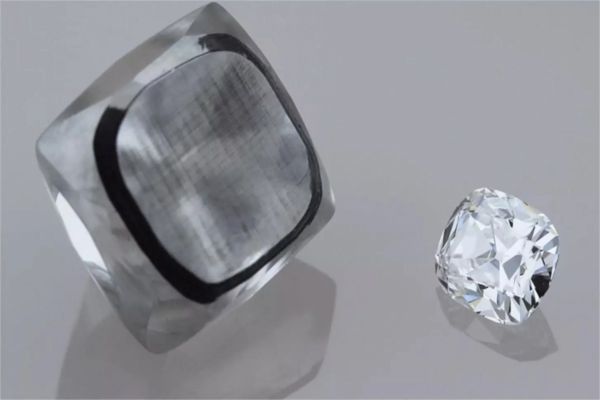
In 1074, European crowned heads began using diamonds to embellish their jewelry and display their wealth, thus triggering a competition for the possession of the most sumptuous jewels.
It was only about three centuries later, around 1330, that in Venice the development of diamond facet polishing began, and it was in 1479 that the Flemish jeweler Lodewyk van Berken invented the polishing wheel, thus revolutionizing the work of the precious stone.
Until the 15th century in Europe, only monarchs had the privilege of wearing diamonds, mainly reserving them for themselves. masculine jewelry. However, in 1477, Princess Mary of Burgundy made history by becoming the first woman to wear a diamond, when Archduke Maximilian of Austria gave her one. an engagement ring rise of such a gem.
This ring became emblematic of the symbol of eternal love between two people, particularly with the concept of the "ring". solitary ", highlighting a single diamond, often colorless.
Around 1530, the King of France, Francis I, began the importation of diamonds. from India, which was then the main source of the diamond market. This initiative marked the beginning of an inventory of the French crown jewels, which at the time consisted of eight sumptuous jewels. In the 18th century, under the reigns of Louis XIV and Louis XV, this inventory was enriched, making the treasure of the French crown the most beautiful collection of diamonds in Europe.
Until 1700, diamonds from India were the only ones known in the world, but with the depletion of Indian deposits, a new quest began. The Great Discoveries, initiated in the 15th century, revealed deposits in Latin America, notably in Brazil around 1725. This discovery triggered an intense " diamond rush ", as new territories were being explored in search of these precious gems.
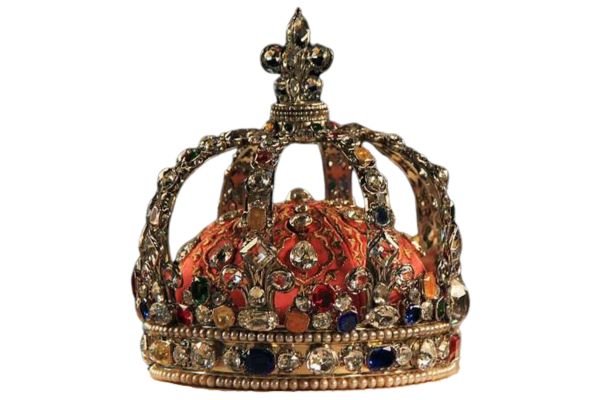

With the discovery of new diamond deposits, the market was flooded and the prices fell. This abundance led to a rethinking of the use of diamonds, particularly in the fashion and couture industries. No longer reserved for jewelry, diamonds were incorporated into clothing designs, where jewelers, lapidaries, and couturiers collaborated to mix fabrics and gems. Thus, aristocrats and queens adopted dresses encrusted with diamonds and other precious stones. shine more in society.
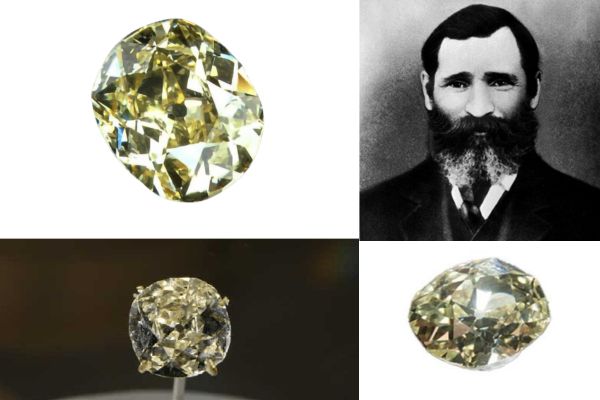
In 1866, a teenager named Erasmus Jacobs discovered the first diamond in South Africa in a river near his home. This diamond, an impressive size of 21.25 carats, was named "Eureka". This discovery had a global impact, triggering a real diamond rush in South Africa five years later. This country then became the new diamond eldorado, an operation that still continues today.
The most prestigious historical diamonds are often referred to as the "Golconda diamonds"Renowned for their delicacy and purity, the diamonds of Golconda remain the most prized and purest gems of all."
Learn more about the engagement ring
The tradition of proposing with a ring dates back to antiquity, with deep roots in Egyptian and Roman cultures. The ancient Egyptians considered the circle as a symbol of eternity, exchanging rings to seal their union. They believed that the vein of love was located on the fourth finger of the left hand, directly connected to the heart, hence the choice of this location to wear rings.
The Romans, in the 2nd century BC J.-C., also adopted this tradition. The groom would give the bride agold ring to be worn during the engagement ceremony and at special events, while an iron ring was worn at home. These rings were simple and the ceremony was not at all romantic, being rather a property sign.
However, in the Middle Ages, this custom evolved towards more romanticism. Wealthy couples exchanged luxurious rings adorned with engravings of love poems, thus adding a sentimental dimension to this ancestral tradition.
What about the diamond on an engagement ring ?
Marilyn Monroe perfectly summed up women's attachment to diamonds with her famous quote: "Diamonds are a woman's best friend."This statement was particularly true for" Marie of Burgundy, who, in the 15th century, broke conventions by demanding and obtaining a diamond ring, whereas this precious stone was once reserved for men.
Marie of Burgundy, an exceptionally wealthy and coveted heiress, was aware of her worth and claimed a ring customized with diamonds, as well as a gold ring. Archduke Maximilian of Austria responded to his wish by offering him a ring adorned with diamonds forming an "M", which could symbolize both "Marie" and "Maximilian", thus sealing a powerful and happy marriage.
Since this episode, the offering of diamond engagement rings has become a widespread practice among the royalty, nobility, and European elite. These privileged rings also have introduces a variety of precious stones colorful in their jewelry, creatingfloral pieces adorned with diamonds, , ruby, , garnets, , Emeralds and amethysts.

Around 1880, after the discovery of vast diamond deposits in South Africa, The purchase of diamond engagement rings has become an indispensable trend.. Massive advertising campaigns have encouraged American men to spend the equivalent of two months' salary to prove their love. Starting from the 1930s, the diamond engagement ring has become a popular symbol to seal the promesse of an eternal love.
Most famous diamond engagement rings in history
Empress Josephine: You and me
The style of the "you and me" engagement ring dates back to the time of Empress Josephine, who played a major role in popularizing natural diamonds. In 1796, Napoleon Bonaparte proposed to his first wife with a "you and me" engagement ring, where Two stones, a sapphire and a diamond, were arranged side by side. This arrangement symbolized the meeting of the two lovers, thus creating a strong and lasting emotional bond.
This style of engagement ring has been perpetuated over the centuries, becoming iconic thanks to personalities such as Jackie Kennedy, Emily Ratajkowski, or Megan Fox. Josephine passed on her iconic engagement ring to her daughter, thus perpetuating this tradition within the Bonaparte family for over two centuries.
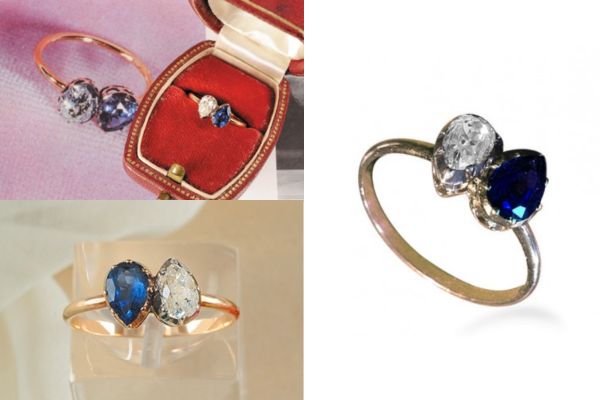
In 2013, this iconic ring was auctioned by the French auction house Osenat during the sale "The Empire at Fontainebleau, the rendezvous of history", reaching an impressive sale price of nearly 950,000 dollars. This transaction illustrates the historical and sentimental value attached to these "you and me" rings, which continue to fascinate and captivate collectors and jewelry enthusiasts around the world.
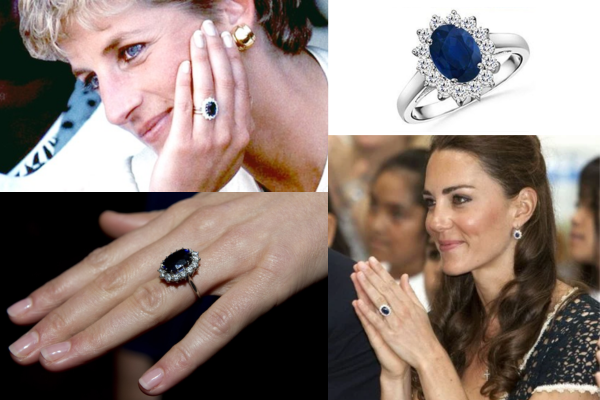
Princess Diana & Kate Middleton: The famous sapphire
Sapphire de 12 carats entouré de 14 diamants solitaires. Translation: Princess Diana's engagement ring remains one of the most iconic and admired pieces in the world. Offered by Prince Charles during their engagement in 1981, this extraordinary ring is distinguished by a 12-carat sapphire surrounded by 14 solitaire diamonds. Stunning 12 carat oval sapphire, beautifully framed by sparkling diamonds, all mounted on a white gold ring. Created by the prestigious British jewellery house Garrard, this daisy ring has become an iconic symbol of eternal love, captivating the attention of the entire world.
When Prince William proposed to Kate Middleton in 2010, he chose to carry on the family legacy by giving his future wife the engagement ring of his late mother, Princess Diana. This poignant gesture added an extra sentimental dimension to this already historically significant ring, thus highlighting the importance of tradition and continuity within the British royal family.
Grace Kelly: The Cartier Diamond
Grace Kelly's engagement ring, given by Prince Rainier III of Monaco in 1955, remains a remarkable piece of jewelry history. Designed by the prestigious jewelry house Cartier, this platinum ringPresents a diamond ofemerald size Impressive over 10 carats, accentuated by baguette-cut diamonds on the sides.
This exceptional jewel embodies the glamour and prestige associated with Princess Grace, who became a global icon after her royal wedding. Estimated at over $4.7 million, this ring is now as legendary as the princess who wore it, testifying to the eternal love between Grace Kelly and Prince Rainier III, as well as their emblematic union between Hollywood and royalty.
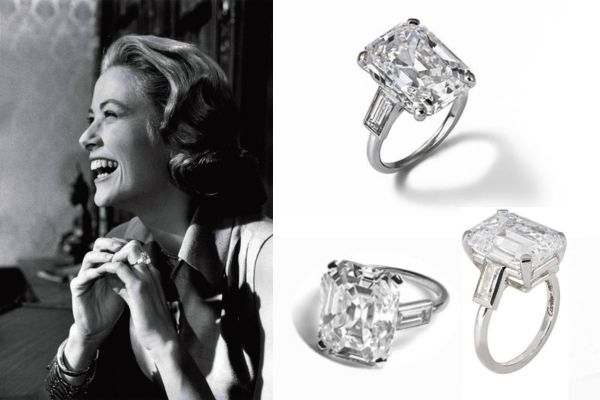
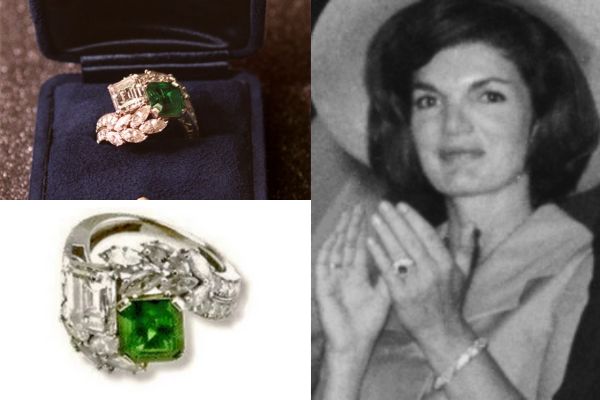
Jackie Kennedy: Van Cleef & Arpels
During her engagement to John Kennedy, Jackie Onassis was desperately looking for a ring that would suit her. Finally, elle discovered her ideal jewel at Van Cleef & Arpels in New York: a Ring adorned with a 2.84 carat emerald cut emerald, accompanied by a 2.88 carat emerald cut diamond, all framed by a baguette diamond band. This art deco style jewel reflects the future first lady's love for emeralds.
In 1961, Jackie added about two carats of diamonds to the ring. by replacing the baguette diamonds with diamonds marquise size, thus creating a crown around the two central stones. Today, this precious ring is part of the collection at the Kennedy Presidential Library in Boston, preserving the memory of the timeless love between Jackie and John Kennedy.
Elizabeth Taylor, 1968
Elizabeth Taylor received a 69-carat diamond from Richard Burton, purchased from the Krupp family in 1968. This diamondAsscher size of 33 carats, initially owned by the Krupp family, was one of Taylor's favorites. Although offered four years before their marriage, elle He often wore it on his ring finger like a wedding ring.
It was sold for 8.8 million dollars at an auction by Christie's to a South Korean conglomerate.
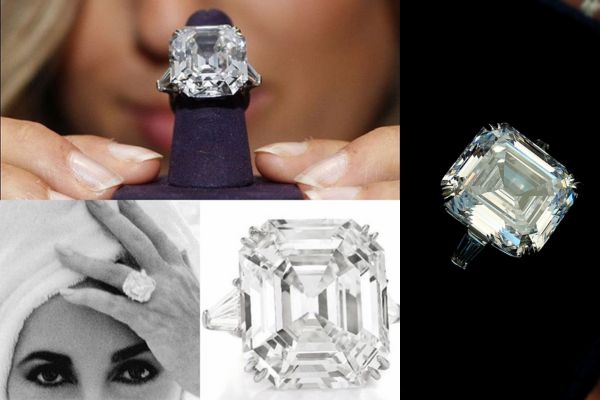

Marilyn Monroe: a river of diamonds wedding ring
Marilyn Monroe receives a magnificent eternity ring., a full tour paved with 35 baguette-cut diamonds. Of unparalleled simplicity and beauty, elle Perfectly reflects the grace of the one who wears it. Joe Dimaggio made the right choice: the eternity ring symbolizes purity and eternal love.
Yet, this ring has become the symbol of an unhappy marriage between two living legends. Elle It embodied the dream of a harmonious future shared by both, a dream that never came true. Their fairy tale ended after only 274 days.





















